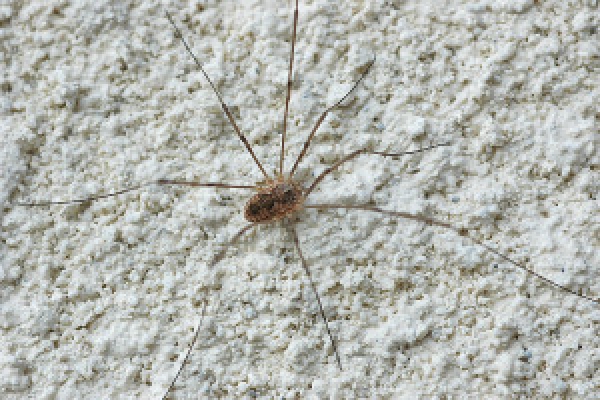Glacier Retreat Ushers in Arachnids

Harvestmen— a spider-like arachnid— are among the first creatures to inhabit land in the wake of glacier retreat, according to a recent study by Sigmund Hågvar and Daniel Flø in the Norwegian Journal of Entomology. The land where glaciers have recently melted is an ideal habitat for creepy-crawlies including spiders, beetles, and other invertebrates. Perhaps surprisingly, these predators are often the first species found on this new land, before herbivores and even plants, although classical theories in ecology state that it should be the other way around.
The authors suggest that this reversal is made possible by the availability of two types of prey: insects that fly in from neighboring areas or are carried in by the wind, and midges that hatch in the carbon-rich puddles formed by meltwater from the retreating glaciers.
Although Hågvar and Flø mention other species in their article, the study focuses on Mitopus morio, a common spider-like creature in the arachnid family called a harvestman (Opiliones). In America, harvestmen are commonly known as daddy-longlegs. These creatures are both predators and scavengers, since they consume living and dead invertebrates. Having a relatively short life cycle of only one year, young harvestmen hatch during snowmelt in spring and die as mature adults in the fall. Due to their habit of living on newly uncovered land, harvestmen are considered pioneer invertebrates.
Harvestmen are found across Norway, but Hågvar and Flø focused on the ones living in areas of glacier retreat, specifically at the Midtdalsbreen Glacier near the mountain village Finse. This glacier drains the eastern portion of the Hardangerjøkulen (Hardanger Ice Cap).
The study was conducted in different areas— on land that was uncovered 205 years ago and on more recently uncovered terrain. Hågvar and Flø found that harvestmen greatly outnumbered spiders except at the oldest site, and also outnumbered the total number of carabid beetles located at three of the sites (areas uncovered 40, 160 and 205 years ago). In the land that has been uncovered for three years, harvestmen follow the glacier retreat, living alongside the glacier’s edge.
The creatures live on barren ground, meaning there doesn’t need to be any vegetation for them to thrive. The lack of vegetation allows them to move freely, and the empty land is better heated by the sun— an important benefit for these cold-blooded organisms. The study found that the harvestmen thrive best during warm and dry years. Because of the quick establishment of life on what is considered inhospitable land, harvestmen serve as a reminder that nature is remarkable and surprising.
This story originally appeared in Glacierhub

Facebook comments